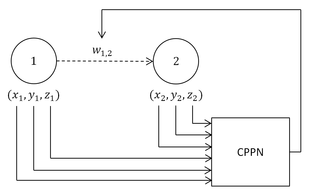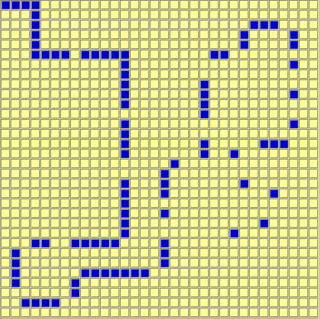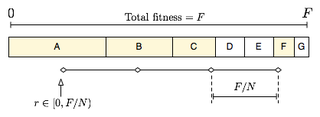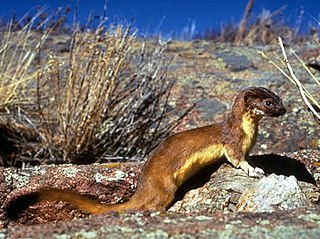 W
WIn computer science and operations research, a genetic algorithm (GA) is a metaheuristic inspired by the process of natural selection that belongs to the larger class of evolutionary algorithms (EA). Genetic algorithms are commonly used to generate high-quality solutions to optimization and search problems by relying on biologically inspired operators such as mutation, crossover and selection.
 W
WIn computer science and operations research, a genetic algorithm (GA) is a metaheuristic inspired by the process of natural selection that belongs to the larger class of evolutionary algorithms (EA). Genetic algorithms are commonly used to generate high-quality solutions to optimization and search problems by relying on biologically inspired operators such as mutation, crossover and selection.
 W
WHypercube-based NEAT, or HyperNEAT, is a generative encoding that evolves artificial neural networks (ANNs) with the principles of the widely used NeuroEvolution of Augmented Topologies (NEAT) algorithm. It is a novel technique for evolving large-scale neural networks using the geometric regularities of the task domain. It uses Compositional Pattern Producing Networks (CPPNs), which are used to generate the images for Picbreeder.org and shapes for EndlessForms.com. HyperNEAT has recently been extended to also evolve plastic ANNs and to evolve the location of every neuron in the network.
 W
WA mating pool is a concept used in evolutionary computation, which refers to a family of algorithms used to solve optimization and search problems.
 W
WThe Santa Fe Trail problem is a genetic programming exercise in which artificial ants search for food pellets according to a programmed set of instructions. The layout of food pellets in the Santa Fe Trail problem has become a standard for comparing different genetic programming algorithms and solutions.
 W
WStochastic universal sampling (SUS) is a technique used in genetic algorithms for selecting potentially useful solutions for recombination. It was introduced by James Baker.
 W
WThe weasel program or Dawkins' weasel is a thought experiment and a variety of computer simulations illustrating it. Their aim is to demonstrate that the process that drives evolutionary systems—random variation combined with non-random cumulative selection—is different from pure chance.